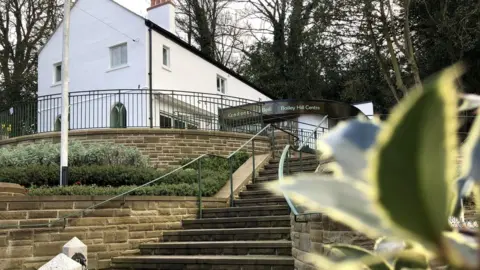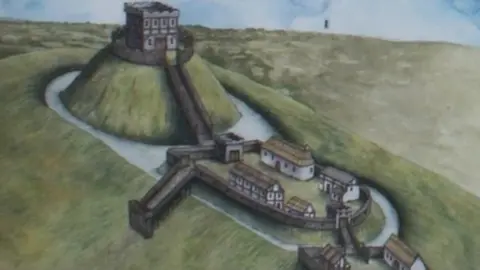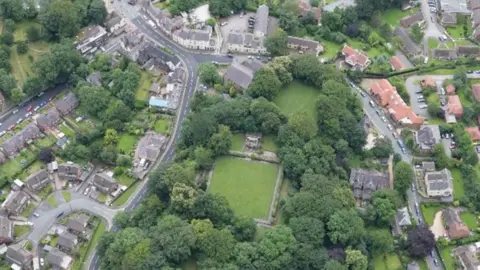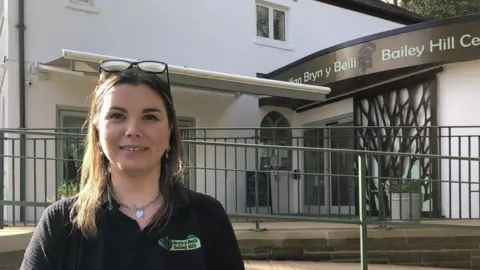Mold's Bailey Hill restored after £1.8m project
 BBC
BBCA park and garden that was once the cultural centre of a market town has been given new life after a £1.8m restoration.
Bailey Hill in Mold, Flintshire, has been owned by lords and princes, but fell into disrepair.
The Norman castle site, which dates to the 11th Century, has been a park at the top of the town since 1920.
Jo Lane, Bailey Hill project officer, said the development was "really exciting".
Bailey Hill began as motte and bailey castle, built in about 1080 on the highest point in the town by a Norman Marcher Lord.
Mold is thought to come from a corruption of his name, Robert de Mont Haut (High Hill in Norman French).
 Flintshire council
Flintshire councilUntil 2002, the outer bailey had tennis courts and the inner bailey was used as a bowling green.
But the protected ancient monument became overgrown and anti-social behaviour left it covered in litter.
Then a group of volunteers formed, first to clean up and tend the gardens at Bailey Hill.
Eventually, the group won National Lottery funding to build an interpretation centre to explain the site's significance.
 RCAHMW
RCAHMWAfter years of planning, the refurbished park is set to open to the public from the first weekend in April.
Money has been spent making the site more accessible, with ramps in addition to steps, a new interpretation centre also has a space for community groups and the inner bailey now has a performance space.
Ms Lane said: "I speak to people on a daily basis who say 'I've lived in Mold for 40 years and I've never been to Bailey Hill.
"That's now changing, people are coming and making the most of this gem of a park in the centre of the town"

Mayor of Mold Sarah Taylor said she hoped the redevelopment would lead to "a lot more events and we want other clubs and organisations to hold their events here".
The redevelopment of Bailey Hill also led to archaeological discoveries, including arrowheads, human remains and a stone wall that archaeologists believe increases the historical significance of the site, suggesting the original castle was a temporary wooden structure.
A team of volunteers will continue to research the historical information while others will lead guided tours.
David Preece, a historian and member of the Friends of Bailey Hill, added: "We'd like to discover more about the fort.
"You look at it now and there's nothing left of it but if you look in the town all the stones from the fort are now in the houses around here, so there's plenty more under the surface."
 David Rowe
David Rowe
- STARS OF WALES: World class Welsh musical talent
- LAST CHANCE TO SAVE: Will Millard explores some of Wales’s hidden historic buildings

